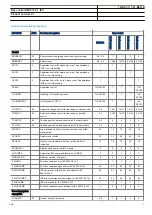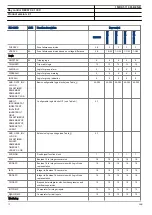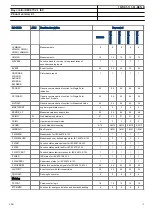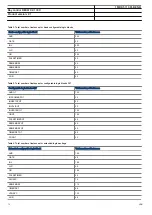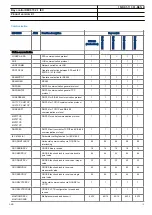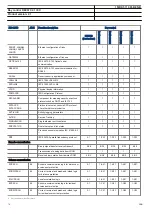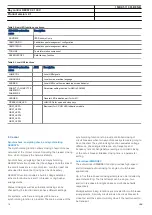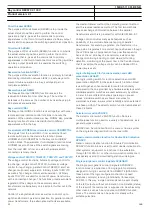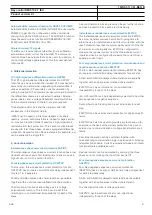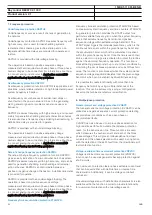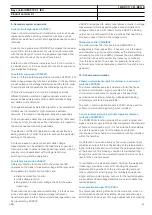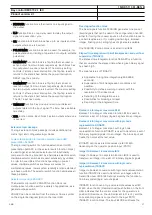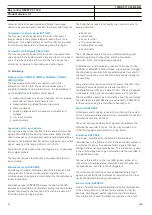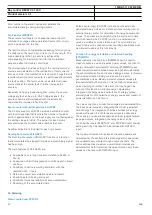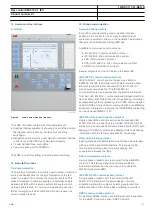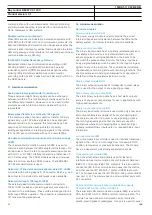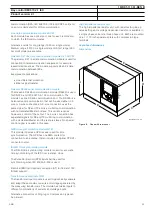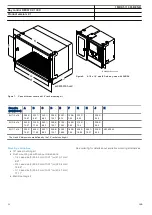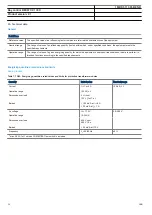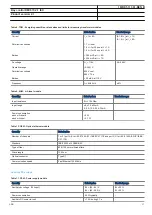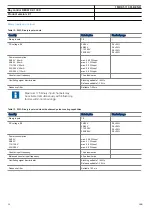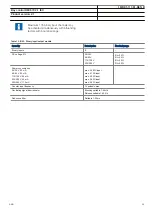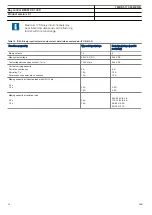
9. Secondary system supervision
Current circuit supervision CCSSPVC
M12444-3 v10
Open or short circuited current transformer cores can cause
unwanted operation of many protection functions such as
differential, earth-fault current and negative-sequence current
functions.
Current circuit supervision (CCSSPVC) compares the residual
current from a three phase set of current transformer cores
with the neutral point current on a separate input taken from
another set of cores on the current transformer.
A detection of a difference indicates a fault in the circuit and
is used as alarm or to block protection functions expected to
give inadvertent tripping.
Fuse failure supervision FUFSPVC
SEMOD113820-4 v11
The aim of the fuse failure supervision function FUFSPVC is to
block voltage measuring functions at failures in the secondary
circuits between the voltage transformer and the IED in order
to avoid inadvertent operations that otherwise might occur.
The fuse failure supervision function basically has three
different detection methods, negative sequence and zero
sequence based detection and an additional delta voltage
and delta current detection.
The negative sequence detection algorithm is recommended
for IEDs used in isolated or high-impedance earthed
networks. It is based on the negative-sequence quantities.
The zero sequence detection is recommended for IEDs used
in directly or low impedance earthed networks. It is based on
the zero sequence measuring quantities.
The selection of different operation modes is possible by a
setting parameter in order to take into account the particular
earthing of the network.
A criterion based on delta current and delta voltage
measurements can be added to the fuse failure supervision
function in order to detect a three phase fuse failure, which in
practice is more associated with voltage transformer
switching during station operations.
Fuse failure supervision VDSPVC
GUID-6AF2219A-264F-4971-8D03-3B8A9D0CB284 v4
Different protection functions within the protection IED
operates on the basis of measured voltage at the relay point.
Some example of protection functions are:
• Distance protection function.
• Undervoltage function.
• Energisation function and voltage check for the weak
infeed logic.
These functions can operate unintentionally, if a fault occurs
in the secondary circuits between voltage instrument
transformers and the IED. These unintentional operations can
be prevented by VDSPVC.
VDSPVC is designed to detect fuse failures or faults in voltage
measurement circuit, based on phase wise comparison of
voltages of main and pilot fused circuits. VDSPVC blocking
output can be configured to block functions that need to be
blocked in case of faults in the voltage circuit.
Multipurpose filter SMAIHPAC
GUID-EB0B11C3-FF79-4B8D-A335-649623E832F9 v2
The multi-purpose filter function block, SMAIHPAC, is
arranged as a three-phase filter. It has very much the same
user interface (e.g. inputs and outputs) as the standard pre-
processing function block SMAI. However the main difference
is that it can be used to extract any frequency component
from the input signal. Thus it can, for example, be used to
build sub-synchronous resonance protection for synchronous
generator.
10. Scheme communication
Scheme communication logic for distance or overcurrent
protection ZCPSCH
M13860-3 v9
To achieve instantaneous fault clearance for all line faults,
scheme communication logic is provided. All types of
communication schemes for permissive underreaching,
permissive overreaching, blocking, delta based blocking,
unblocking and intertrip are available.
The built-in communication module (LDCM) can be used for
scheme communication signaling when included.
Current reversal and weak-end infeed logic for distance
protection ZCRWPSCH
M13896-3 v14
The ZCRWPSCH function provides the current reversal and
weak end infeed logic functions that supplement the standard
scheme communication logic. It is not suitable for standalone
use as it requires inputs from the distance protection
functions and the scheme communications function included
within the terminal.
On detection of a current reversal, the current reversal logic
provides an output to block the sending of the teleprotection
signal to the remote end, and to block the permissive tripping
at the local end. This blocking condition is maintained long
enough to ensure that no unwanted operation will occur as a
result of the current reversal.
On verification of a weak end infeed condition, the weak end
infeed logic provides an output for sending the received
teleprotection signal back to the remote sending end and
other output(s) for local tripping. For terminals equipped for
single- and two-pole tripping, outputs for the faulted phase(s)
are provided. Undervoltage detectors are used to detect the
faulted phase(s).
Local acceleration logic ZCLCPSCH
M13823-3 v6
To achieve fast clearing of faults on the whole line, when no
communication channel is available, local acceleration logic
ZCLCPSCH can be used. This logic enables fast fault clearing
1MRK 511 361-BEN B
Bay control REC670 2.1 IEC
Product version: 2.1
ABB
25

